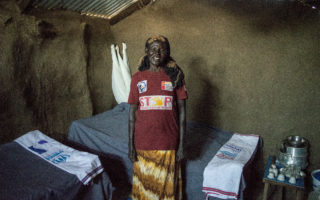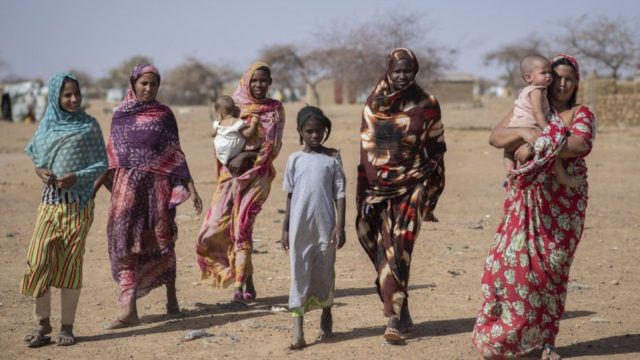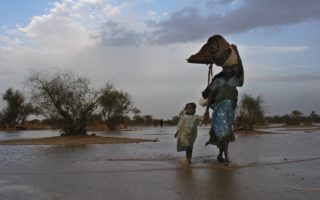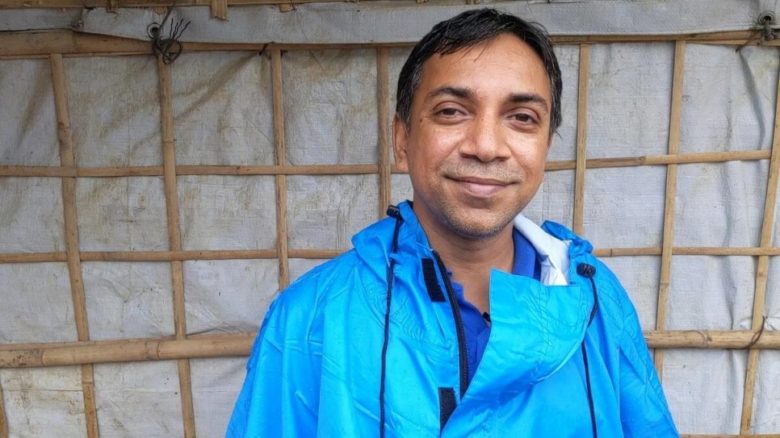
An assistant environment officer, Ehsanul Hoque works on disaster preparedness and restoring the environment in the Rohingya refugee camps in Bangladesh. © UNHCR/Hannah Macdonald
UNHCR has more than 17,800 staff working around the world. This World Humanitarian Day, meet Ehsanul Hoque, who works with the environment unit in Cox’s Bazar, Bangladesh.
By Kristy Siegfried
Name: Ehsanul Hoque, 40, from Bangladesh.
Why did you become an aid worker?
My home is in a coastal district very near to the sea and from my childhood we’ve been experiencing cyclones and floods. I can remember the 1991 cyclone. My younger sister and I took shelter under the bed with just one lantern, and we were praying to God. The country didn’t have the capacity to manage these types of emergencies and more than 130,000 people died in coastal areas and islands.
At university I studied environmental science and later I did development studies for my post-graduate degree. So, these two apparently divergent disciplines helped me understand situations from different angles. I learned that Bangladesh is disaster prone and highly vulnerable to climate change, and if I can do something in the humanitarian sector that would be good.
I’m thankful to UNHCR for giving me the opportunity to volunteer in Uganda. That opened my eyes to the vulnerability of displaced people. Over 40 per cent of refugees are hosted in countries that are highly vulnerable to climate change, and over 70 per cent of internally displaced people.
What is the most rewarding / challenging thing about your job?
My current job offers some solutions to prepare for or avert disasters, so that’s the most rewarding part. Now I’m working on [disaster] preparedness with nature-based solutions. These are solutions that sustainably manage and restore ecosystems and biodiversity while simultaneously improving human well-being. They can also capture and store greenhouse gases. For example, we are protecting stream banks with grass hedging and planting, which improves biodiversity, sequesters atmospheric carbon to the soil and reduces the risk of streams becoming clogged and flooding.
We’re implementing many slope stabilisation activities that can really reduce slope failures and flooding, and that’s very associated with the protection of refugees, which is the core mandate of UNHCR.
The challenge with nature-based solutions is that it takes time. It’s challenging to convince people this is the best and most sustainable way.
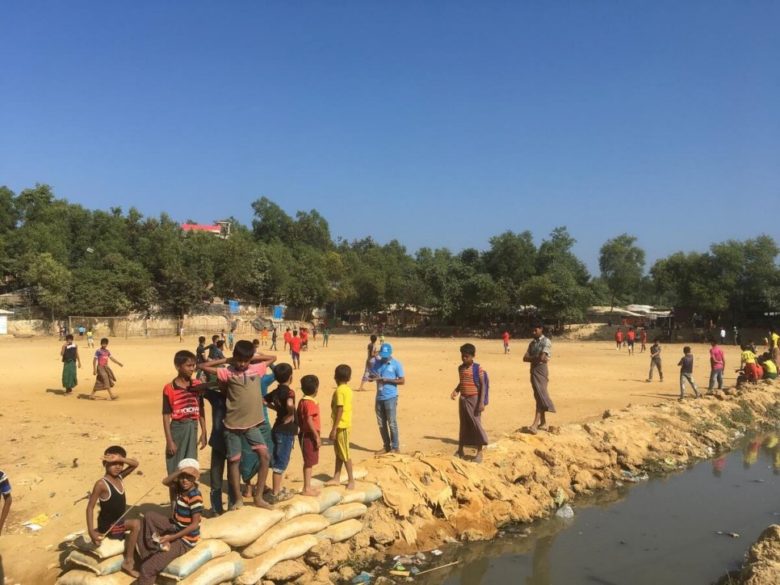
Ehsanul documents water quality data for a degraded stream in the camp. © UNHCR/Sultan Mahmud
How has the climate emergency impacted your work?
The camps here in Bangladesh are in the paths of major cyclones and there is this competition for space in hilly terrain. When a disaster happens, this amplifies the impact.
Recent flooding in the camps damaged over 6,000 shelters and forced more than 25,000 refugees to seek shelter in communal facilities or with other families. Rainfall data confirms a sharp increase in rainfall for the month of July in recent years.
This is why for the Bangladesh operation, climate action should be a major focus of emergency preparedness.
If we prepare now, from today, then we’ll be reaping the benefits for many years to come and it would save huge resources, and that would be our contribution to the next generation, for our children and our grandchildren. We’d not only be contributing to this operation, but to greater humankind.
It is good to know that the UN has already committed to neutralizing its carbon emissions. I’m one of the focal points for the Greening the Blue initiative (to reduce the UN System’s environmental footprint) which means keeping an inventory of our carbon emissions.
What was your best day at work?
In 2017 and 2018, the refugees, and staff even, were suffering with the hot sun – there was not a single bit of shade. Now, when I go to the field, I become happy every time I see all the trees. The result of the LPG (Liquefied Petroleum Gas) distribution is that the demand for firewood reduced by 80 per cent. Refugees are not going to the forest anymore. And that leads to a best day. On 2 August, an elephant mother gave birth to a calf in the forest. That means this elephant got pregnant around the end of 2019 and that coincides with our distribution of LPG reaching 100 per cent of refugees. It means the elephants are feeling less disturbed.
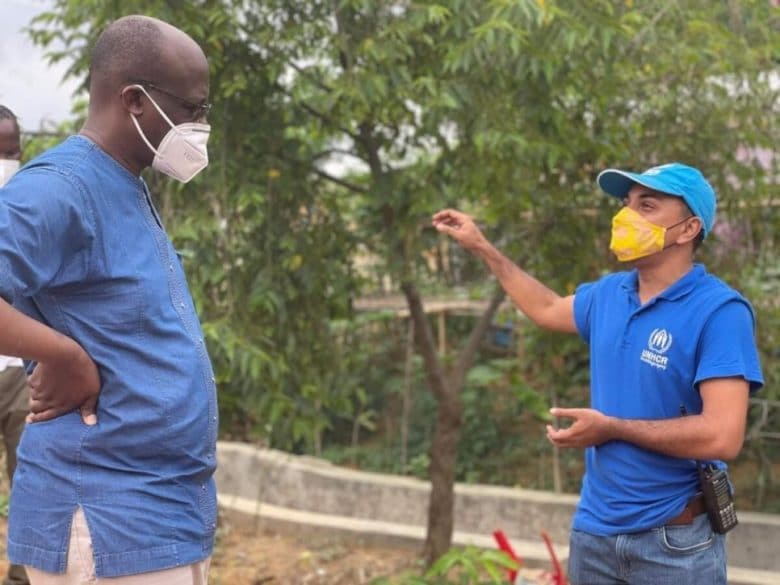
Ehsanul briefing UNHCR Assistant High Commissioner Raouf Mazou on environment activities in the camps. © UNHCR/Louise Donovan
What was your worst day at work?
Our unit formed a youth environment club. At one of these sessions, all the host community and refugee youth members were sitting on either side of the room, and the CiC (camp-in-charge) asked them to introduce themselves. The host community youths started to stand up and say their names and schools. Then I was thinking, ‘Oh my God, what will the refugee children say? Because they’re not studying in school, and they’re not from any district of Bangladesh’.
I became so emotional because I realized the sad reality that the identity we often impose highlights our differences, and not our universal identity as human beings.
After an awkward pause, the CiC intervened and asked the refugee youths to share their names and camp numbers. Working with young people helps us promote shared learning and social cohesion.
Subscribe to UNHCR’s mailing list
How has the COVID crisis impacted your work?
With the restrictions imposed to contain the spread of COVID-19 and activities limited to critical ones by the authorities, we can barely go to the camps. Unfortunately, many environmental activities aren’t considered critical and are not allowed, but LPG distribution, considered as essential, has continued, and we support our partners and refugee volunteers [to carry on with some other activities]. We’ve also come up with remote monitoring of things like human-elephant contact, and the management of the nursery for trees that we grow and plant out in the camps.
Originally published by UNHCR on 19 August 2021.



